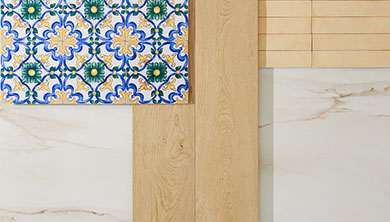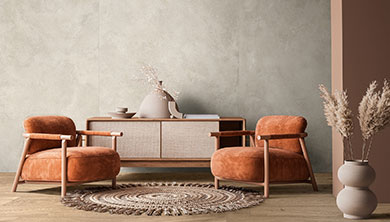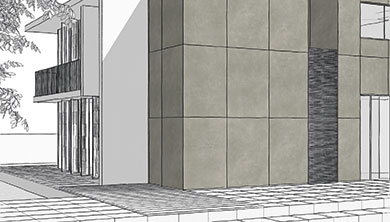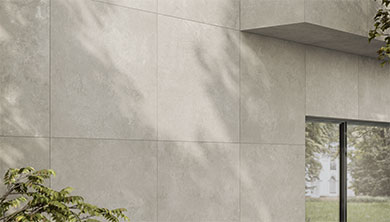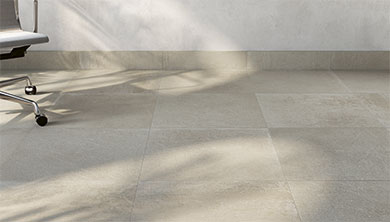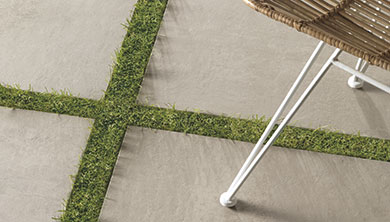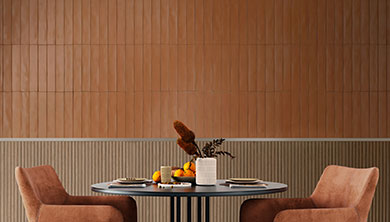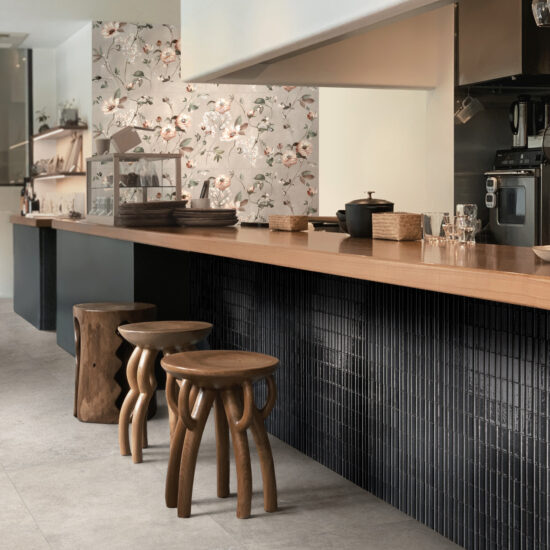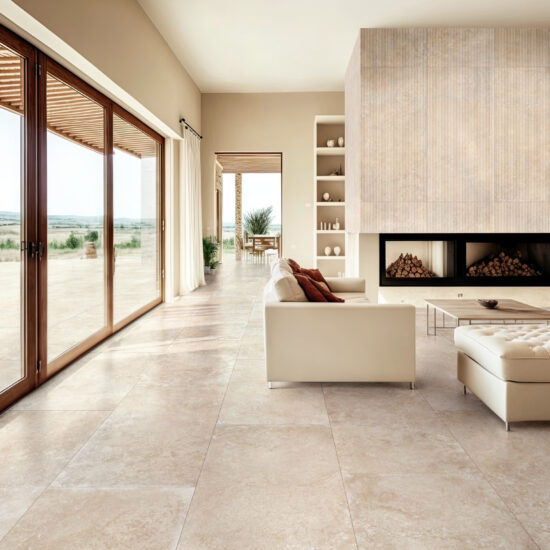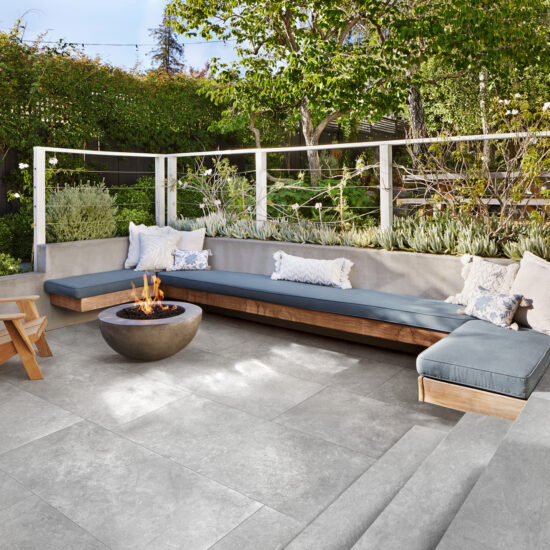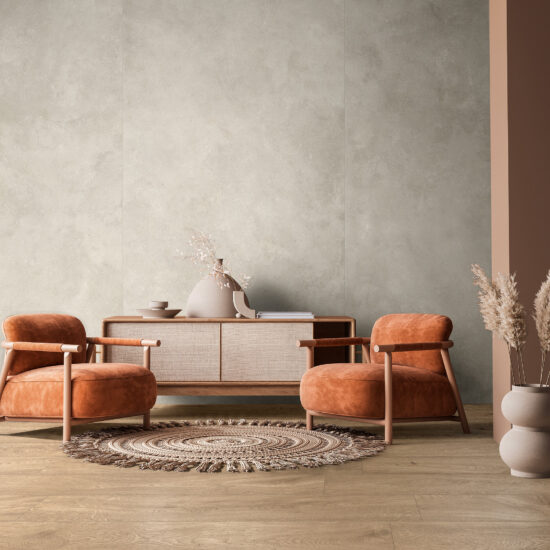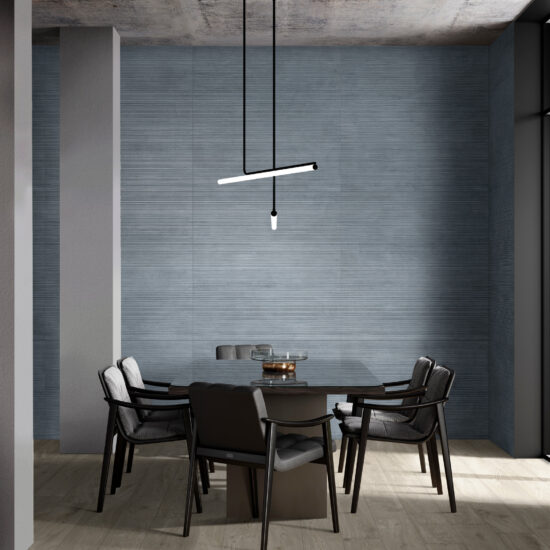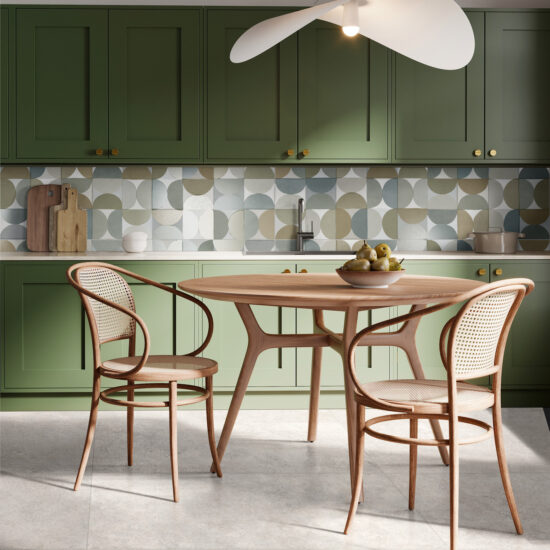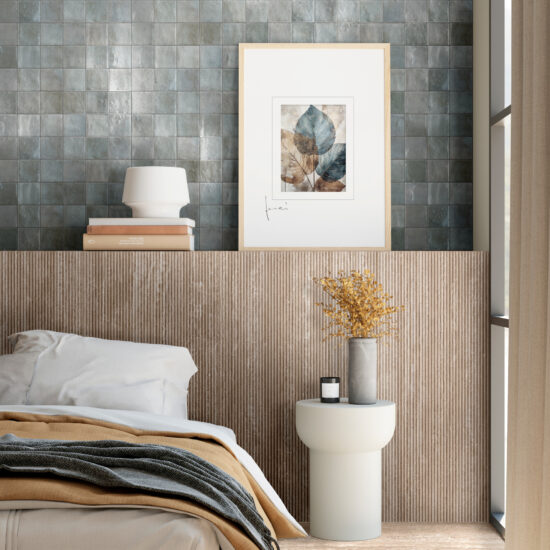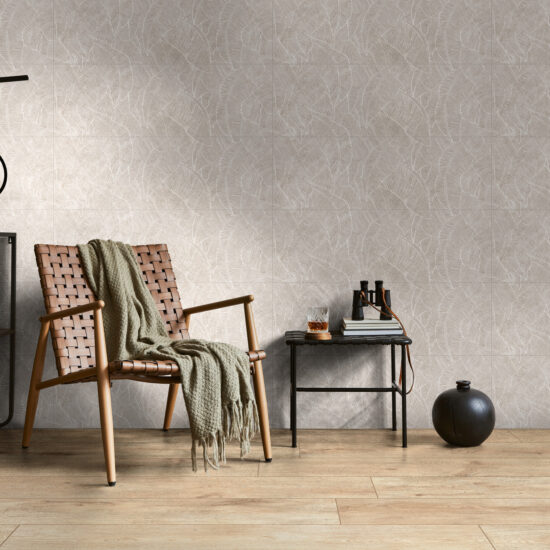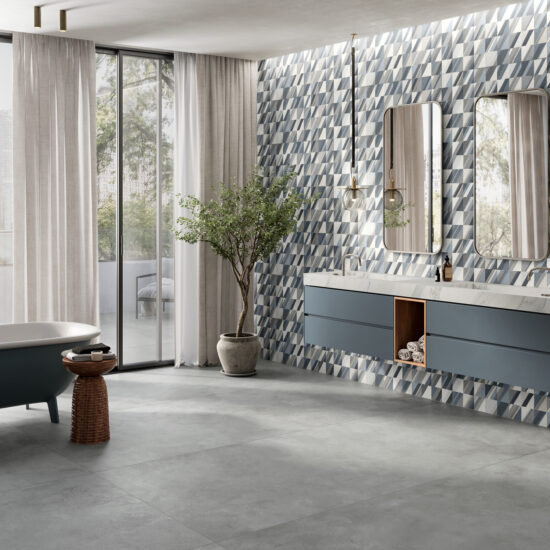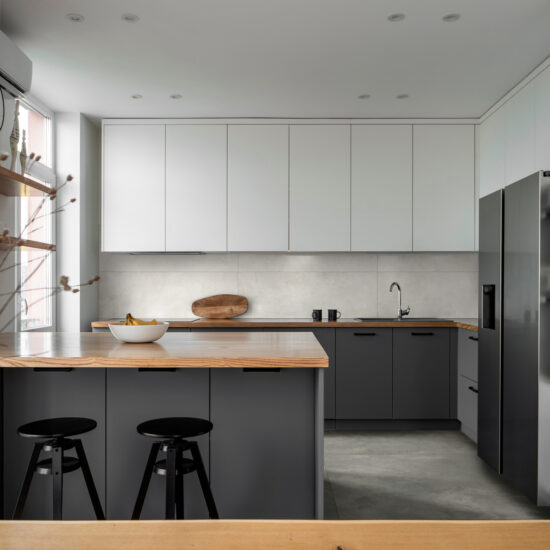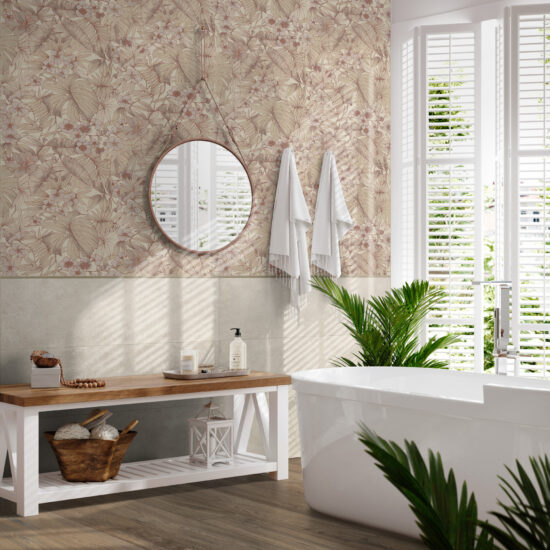Often wrongly used as synonyms,, these two terms actually refer to very different materials, and it’s worth learning more about them to make an informed, appropriate choice that meets your project’s needs.
When it comes to wall and floor coverings for various locations, care must be taken to choose the right material: in this article we’ll explore the benefits and characteristics of stoneware and ceramics, to see what the differences are in terms of durability, design and care.
Characteristics of ceramics
Widely used in interior design, ceramics are a versatile, elegant material with a history that’s been interwoven with that of building and decoration ever since antiquity.
The materials used for making ceramics mainly consist of natural clays and minerals. After selection, these materials are combined in a uniform mix which is then dried and fired to increase its hardness and resistance. Pieces are then glazed and decorated in a final phase, to give the product the required appearance.
There are various kinds of ceramic material, with porous or compact structure, including for example terracotta, porcelain or stoneware, all of which have different characteristics and an aesthetic that can make any location unique.
Characteristics of porcelain stoneware
As we’ve already explained, porcelain stoneware is itself a type of ceramic material, classified, like porcelain, in the compact category.
It differs from ceramics with a porous structure, such as terracotta and majolica ware, in its production process and firing temperature.
The production of stoneware starts with the grinding and mixing of the raw materials, just as for traditional ceramics, but this time more ingredients are added to produce an even denser tile body.
The material’s typical resistance, waterproof properties and low porosity derive from the pressing phase and the high-temperature firing, during which a sintering process occurs: the mixture is compacted to a degree which gives it amazing mechanical strength, since the high temperatures forge the constituent raw materials together.
This makes stoneware a high quality ceramic material, famed for its resistance and its versatility in terms of appearance. Its combination of ingredients and its production procedure make it ideal for a wide range of applications, both indoors and outdoors. Finishing processes such as polishing or glazing, or the addition of pigments during production, are the secret to creating unique aesthetic effects.
Key differences between ceramics and porcelain stoneware
Although initially it may seem that there are very few, or only insignificant, differences, in fact there are factors that determine the material’s appearance, its resistance and its fit with the needs of the locations to be furnished and decorated.
Before choosing porcelain stoneware in preference to other types of ceramics, we need to understand the main differences that affect their composition, production methods and ideal applications, which are fundamental not only for the materials’ appearance but also their functional performance.
Let’s take a closer look at the main differences between stoneware and ceramics, to ensure we can make a really well informed choice.
Composition and materials
The differences between the basic materials used for ceramics and porcelain stoneware are small but highly significant, especially with regard to the production process.
After the first firing phase, the composition of porous ceramics (such as terracotta) is less dense than that of porcelain stoneware, which is pressed and fired at very high temperatures to make it extremely compact and durable.
This difference in composition means that porcelain stoneware is a much less porous, harder-wearing material, while ceramics, although tough, are more likely to chip and to absorb liquids.
Ideal applications of stoneware or ceramics
When it comes to applications, stoneware is extremely versatile – much more so than other porous or non-porous ceramics. The choice will vary depending on the areas to be covered and the locations for which the material is intended, but it’s important not to underestimate a number of essential aspects.
Indoors, ceramic tiles are often popular because of their beauty and the timeless elegance of their many and varied patterns. However, at the same time it must be remembered that in addition to its attractive appearance, stoneware is also resistant to wear, chemicals and thermal shock. Given these characteristics, it’s suitable for application both in indoor contexts and outdoors, in heavily used commercial locations or in places exposed to the most challenging weather conditions.
When choosing between ceramics and porcelain stoneware, it’s also important to consider these durability factors, to ensure that the material used is fully appropriate for the specific demands of the zone where the paving or floor or wall covering is to be installed.

Ceramics or porcelain stoneware: which should you choose?
Given all these factors, it’s clear that ceramics and porcelain stoneware are extremely similar in terms of appearance but profoundly different with regards to the material’s technical properties. To make the right choice, it’s fundamental to consider which material will give the greater benefits in the long term.
Ceramics definitely have their strengths, such as the wide range of glazing options and the aesthetic harmony they create in interiors, as they adapt easily to different interior design styles and applications. However, if we bear in mind crucial factors such as durability and resistance, porcelain stoneware is a highly satisfactory option. While still creating attractive, elegant interior design schemes, not to mention providing easily cleaning and care, it’s also perfect for outdoor areas or heavily used zones like patios, terraces or paths, where a tougher material is required. Stoneware pavers and floor and wall tiles will withstand stains, wear and abrasion, remaining intact over time and naturally lasting longer than ceramics.
To put it briefly, both materials offer a vast range of appearance options: ceramics are often chosen because of their ability to replicate the look of natural materials, with a wide assortment of colors and finishes to suit any furnishing style. Porcelain stoneware, on the other hand, is no less rich and versatile in appearance but with added durability, resistance and adaptability.
So there are many factors to be taken into consideration when choosing between porcelain stoneware and ceramics, and they also constitute a brief list of the main differences between these two materials.
If the area where floor or paving tiles are to be installed is intensively used (e.g. a kitchen, bathroom or outdoor space), stoneware provides guarantees with regard to both resistance and the right balance between beauty and performance.
If you’re looking for a material that combines aesthetic appeal and convenience with a long lifetime, porcelain stoneware is the best choice: find the perfect solution on Ragno.it and decorate all your spaces with style and quality!

